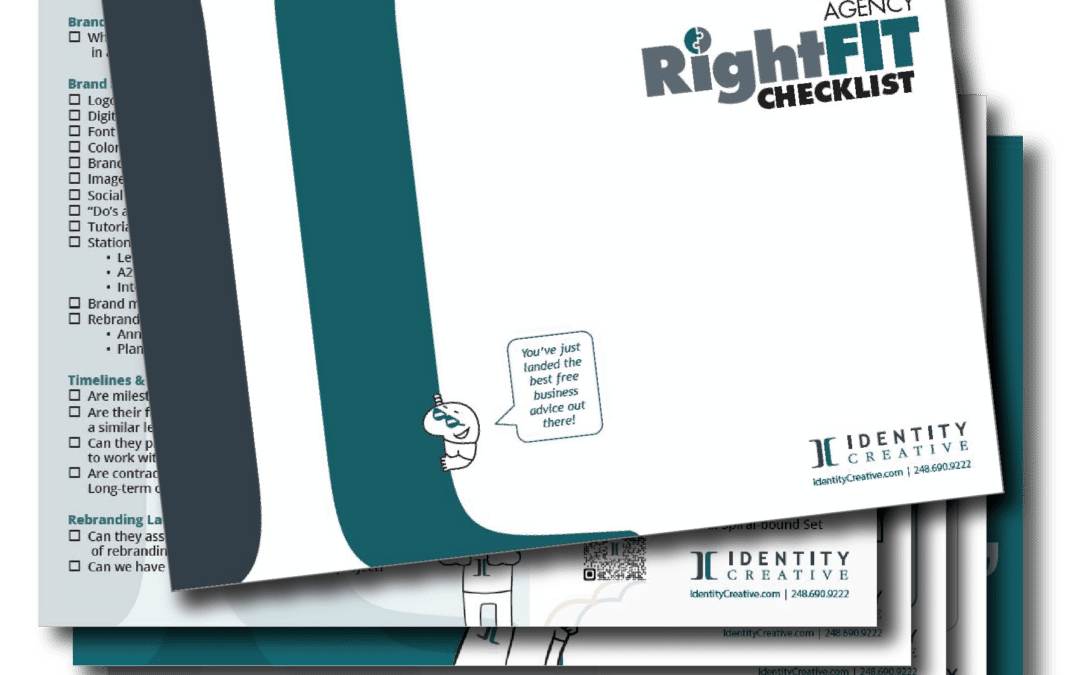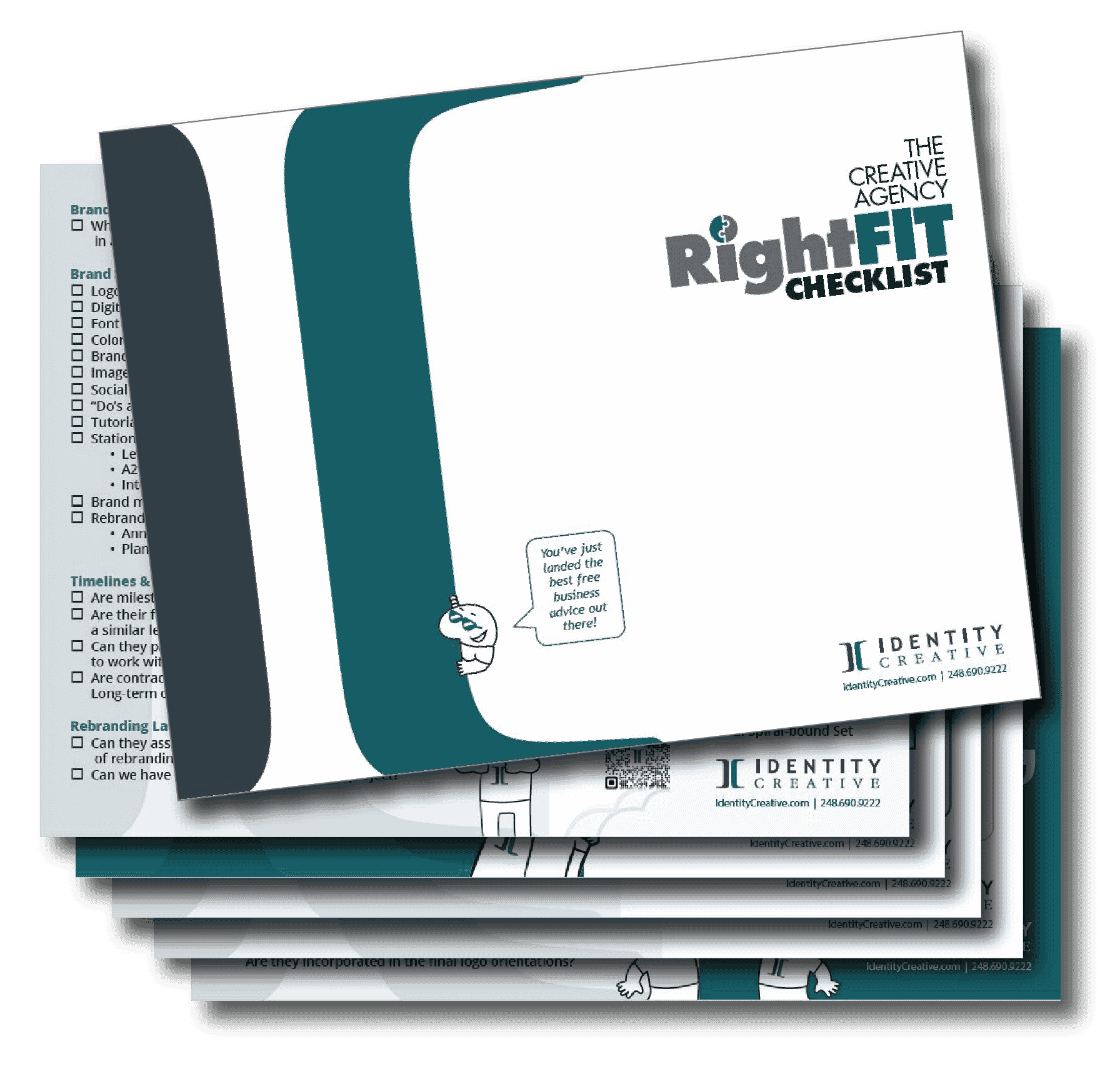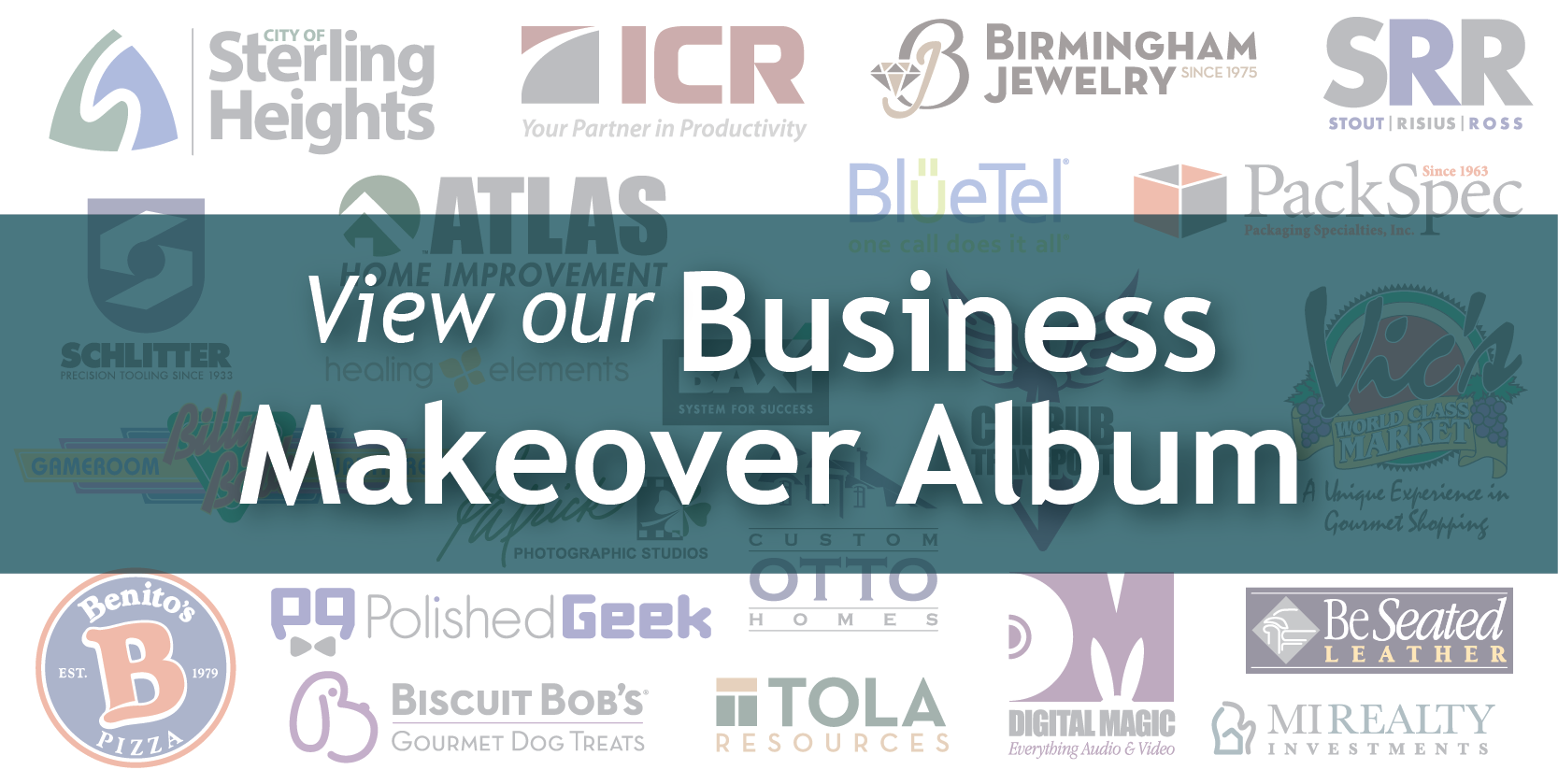Where do you start when your company is ready to take the branding plunge and hire a creative agency?
You have questions:
- What is involved in a rebranding project?
- How much time should it require of us?
- What deliverables can we expect?
Since opening our doors in 1993, we’ve talked with many people looking for someone to create the perfect logo for their company. For this discussion, they generally fit into three categories:
- They have no experience with branding
- They have a vague idea of branding
- They’ve been through a rebranding, know what to expect, and are looking for the right design source.
Whichever category you’re in, you want to find the right fit creative team for your company.
So, where do you start?
In the field of branding, there is a level of consensus about what is involved in a professional branding project. Yet each branding agency or designer will approach branding differently. What benchmark can you establish to compare agencies? How will you find a branding resource that will be the right fit for your company?
Personalities, styles, approaches, tools, and areas of expertise differ. It’s helpful to have a solid sense of what your company needs before you start interviewing agencies.

Most people understand that brands need more than a great logo. The internet has impacted the way people view companies. While people have always looked for businesses they can trust, they expect even more from them today.
Good Branding Goes Deeper.
If buyers learn of a company’s values and mission, given a choice, they will do business with the brand whose values are more aligned with theirs.
“Trust is the ultimate shortcut to a buying decision, says branding guru Marty Neumeier, and the bedrock of modern branding.” Today, trust can be shattered with a single post of a customer service experience gone wrong. Within hours, a company can have a major PR crisis.
On sites like Glassdoor, where current and past employees leave reviews of the work environment, masses of people get perspectives on a company’s culture like never before.
When a business sets up a social media profile, how will it act online? Will it be stagnant, use it as a rotating billboard, or be present and join the conversation? When it posts, what does it sound like?
A professional rebranding project requires a brand strategy. This will provide the tools to build a personified brand identity.
With just a couple of clicks, logos will appear on your screen from around the world in any industry you care to search.
Whether you’re serving customers locally, regionally, or globally, your brand is standing next to giants. How do you look, sound, and act?
Research shows that buying decisions are heavily influenced by the design quality of the website, product, or package.
In the creative world, there is a global pool of talent within reach. How do you find the right agency to work collaboratively with you to create your brand?
We’ve outlined three areas to help you find a creative agency that is the right fit for your company.
1. Know how to ‘talk the branding talk.
2. Know what your company needs.
3. Know what questions to ask.
- Know how to get past branding jargon.
When you talk with designers, they may flood the conversation with a glut of branding terms, and definitions can vary broadly. Don’t hesitate to ask what they mean by those terms. It will help you get a sense of their perspective on branding.
Here’s our definition of the top three branding terms you need to know:
Brand Identity: Some define this as the logo. That’s like saying your identity as an individual is simply your face. Your identity goes exceedingly farther and deeper than your outward appearance. So too does your brand identity.
“The logo is the face of your brand. Your brand is everything.” – Linda Kleist
The logo is a vital piece of a company’s brand identity. It’s how people recognize you, and it has great potential to attract or repel people. Even more, the brand identity encompasses the tangible and intangible a company’s name, message, purpose, values, mission, vision, culture, and the value it brings to people.
Brand Strategy:
A solid brand strategy goes beyond answering the who, what, when, where, and how questions. While these are obviously necessary, they don’t get to the heart of the organization.
All aspects of design and messaging will be informed by aspects of the strategy. Niche, market sector, price, product value, production, communication channels, employee and customer relationships all play roles in a comprehensive brand strategy.
The foundation’s core is a clear outline of the intangible attributes of a business. It codifies the purpose, values, and mission of a business.
- Purpose, Mission, Vision, and Core Value Statements lay the groundwork.
- Customer Action Statement (Credit DiJulius Group)
- Compelling 16-Second Story (Better than an Elevator Pitch!)
When a company builds its product, customer service, and culture on a solid strategy, it’s building a sustainable, authentic brand.
Brand Assets: These are tangible and intangible pieces of a brand. Understanding and managing all brand assets to maintain consistency is a vital part of the brand manager’s role. We cover the why and how of managing your brand assets to build credibility and maintain brand consistency–and save time and money!
Brand Messaging: The words, phrases, taglines, and tone that an organization uses in all their communication: internal, marketing, and sales. Common mistakes in brand messaging is adopting another brand’s style, or being too bland.
Messaging is the nomenclature that you infuse into every aspect of your business. A brand that weathers storms well has messaging that is aligned with its values, mission, and purpose.
When messaging is built on your brand strategy, it informs all your marketing and positively impacts your company culture.
When everyone on your team — and your customers — can consistently say what you stand for, how you’re different, and why it matters, you have won the biggest part of the brand messaging battle!
For more helpful brand-speak definitions, visit this post at Natsumi Nishizumi Design. https://natsuminishizumi.com/blog/branding-terms-example-iJPjA

Because your company is a living organization, your brand is in constant motion. Whatever your position in your organization, there are limitations to what you can know about your brand.
The role you play in your company may impact how you approach looking for a creative resource for branding. We’ve had marketing and sales directors, CIOs, CFOs, administrative assistants, and business owners contact us, looking for a branding agency to rebrand their business.
Take time with your leadership, marketing, customer service, and sales teams to make a list of the gaps in your brand assets and how you manage them. Make a list of what’s confusing in managing your brand, from marketing material to your vision statement.
You’ll also want to get clarity on the time and financial investment you’re willing to make. Some leadership teams are very invested in their brand and expect to take a deep dive into their brand strategy as they rebrand their brand identity.
Other companies are pressed to have a fresh website and logo in a shorter time frame or don’t believe they have the resources for an in-depth rebranding initiative.
The Creative Agency Right-Fit Checklist below will help you pull together a list to cover your company’s specific rebranding objectives.

Rebranding is an investment in time and money, and we don’t want to rebrand just for the sake of doing it or because others are. A well-executed rebranding process and launch has the potential to return exponential results: improved company culture, team morale, talent acquisition, marketplace resilience, and increased sales.
There are many excellent branding resources you can work with. Yet, the internet produces even more branding resources that will make promises, and instead leave you with lackluster, or even worse, disappointing results.
Shopping for a creative agency doesn’t have to be a shot in the dark.
When you’re ready to hire an agency, you want to make sure it’s a team you will enjoy working with, get great value, and help you reach your goals.
When shopping for something that has the potential for significant impact or perilous failure, we feel better knowing which questions to ask.
We created The Creative Agency Right-Fit Checklist to guide you through the first steps of finding the ideal creative agency for your project. Get it here.
Why we created The Creative Agency Right-Fit Checklist:
To save you time
By going through this checklist, you’ll quickly prioritize what you need to achieve your goals.
- To help you find the right creative partner
We’ve heard nightmare branding stories. Make the right choice and avoid costly reiterations and lost time.
- To keep you from getting a half-baked brand
A great brand identity will open doors of opportunity. You don’t want to settle for less.
Researching Creative Agencies and Finding the Right Fit: How to Use This Checklist
You know your company and have a pretty good idea of what you need from an agency. There are likely aspects of a collaborative agency relationship that you may not have considered.
We’ve collected a comprehensive list of questions that impact the relationship and value of working with a creative agency.
We designed this checklist to help you:
- Highlight your priorities in an agency
- Craft your RFP
- Outline relevant interview questions
Use this checklist as a guide.
- Consider what applies to your branding goals
- Read through the interview questions and highlight what’s important to you
- Copy & paste your questions on an interview worksheet
You’re ready to search and connect with a right-fit creative team!





